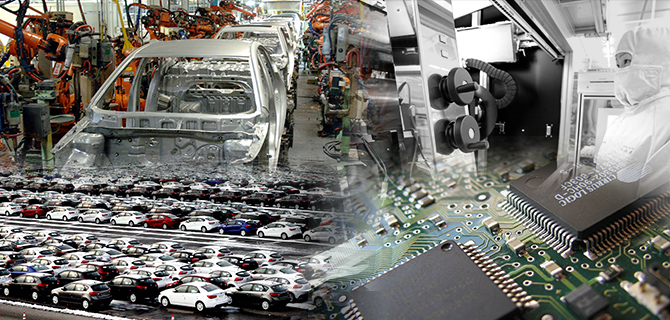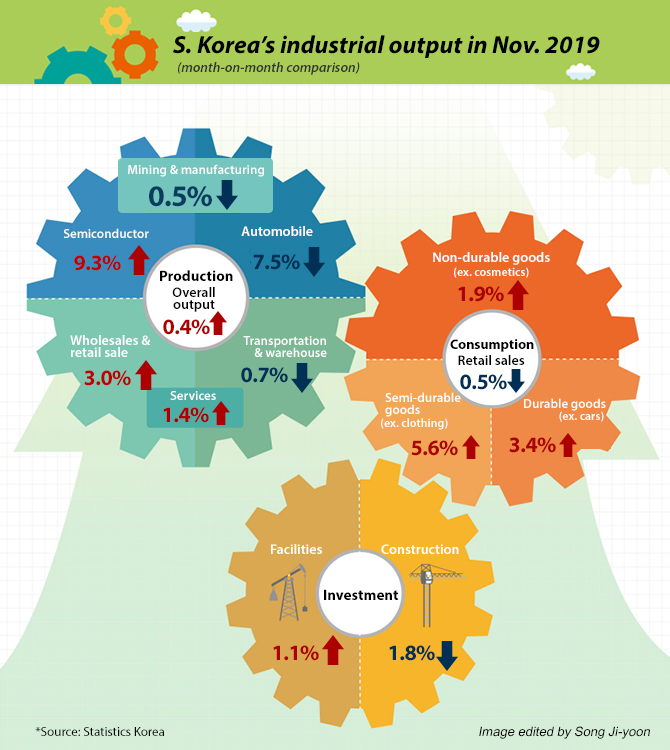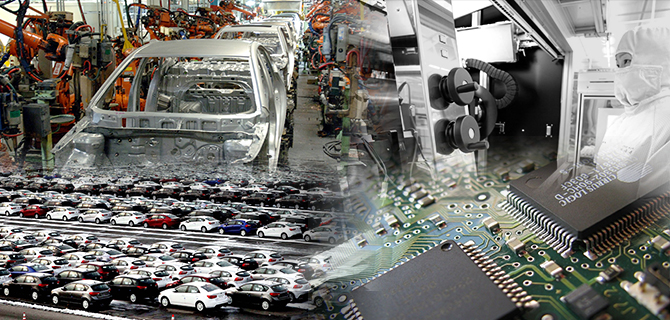 이미지 확대
이미지 확대South Korea’s factory output stayed negative for the second straight month in November while domestic demand and investment showed improvements.
According to Statistics Korea on Monday, the seasonally adjusted mining and manufacturing output in November fell 0.5 percent against the previous month after a 1.7 percent slide in October. Against the year-ago period, it edged down 0.3 percent.
Semiconductor output rose 9.3 percent while automobiles dropped 7.5 percent and metal processing fell 6.5 percent.
Factory operation in November slipped 1.5 percentage points from the previous month to average 71.8 percent. Inventory level fell 0.9 percent on month but added 2.9 percent on year.
Service sector output, an indicator for domestic demand, rose 1.4 percent from a month earlier. Wholesale and retail sectors gained 3.0 percent, led by clothing and cosmetics. Finance and insurance sectors added 2.1 percent on increased banking loans.
 이미지 확대
이미지 확대Retail sales, a barometer for private consumption, jumped 3.0 percent in November after two straight months of decline, owing to a three-week-long nationwide shopping bonanza involving major retailers. Sales of semi-durable goods like clothes rose 5.6 percent as consumers went shopping to upgrade their winter wardrobe. Sales of non-durable goods like cosmetics rose 1.9 percent. Sales of durable goods like cars also jumped 3.4 percent thanks to new releases and year-end promotional campaigns.
Capital investment gained 1.1 percent in November, recovering from a 0.7 percent fall in the previous month. Investment in machinery slipped 0.3 percent while transportation equipment like aircraft jumped 4.6 percent.
The coincident index, which measures present economic activities, was off 0.1 point at 99.3, sliding for the second straight month. But the leading indicator, which forecasts future economic activities, rose 0.4 point to 99.2 to uphold a positive pace for the third month in a row.
By Kim Hyo-jin
[ⓒ Pulse by Maeil Business News Korea & mk.co.kr, All rights reserved]


